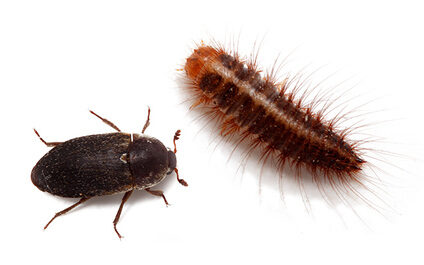
So, you have a dead, smelly thing in your (legal) possession. But what you really want is a clean pile of this thing’s bones. We’ve all been there, amirite?
Now you have to decide how to reliably rot your new, cadaverous cohort. While there’s more than one way to skin a cat (or in this case your dead thing), I typically prefer maceration.
What is maceration, you ask? Well, put simply, it’s the process of submerging your breathless buddy in a container of warm water and letting bacteria chow down on it’s proteins until you’re left with an excessively stinky sludge. Sounds wonderful, doesn’t it?
Ok, so maybe I didn’t sell it as well as I could’ve. “Isn’t there an easier, less smelly way to get those bones??” Well.. let’s go over some other options.

Option 1: Bury your buddy.
Now this can work, you just need the right equipment and a lot of patience. If you just chuck your fetid friend into a shallow grave in your backyard, and then expect to find some clean bones within a month or so, you’ll be sorely disappointed. If you live in the rural boonies (like I do), 9 times out of 10 your dead thing will be dug up and whisked away in the middle of the night by a hungry scavenger.
If you bury your dead dude deep enough, or encase them in a metal cage/mesh bag before burying, you should be able to prevent them from being carried away. However, this process still takes AGES. YEARS, even. This is the main reason I don’t have my own personal roadkill cemetery. That, and I know I’d eventually forget where I buried something and have to dig up my entire yard in search of Ricky the half-rotten raccoon.

Option 2: Open air decomposition.
This method involves leaving your putrid pal out in the open to rot. The only way you’d be able to do this is if you are blessed with a big enough backyard, preferably woodlands. Otherwise your neighbors may be alarmed by the smells coming from next door. You’d also need a metal mesh bag or a metal cage to make sure your friend doesn’t elope with Wile E. Coyote on a short lived honeymoon. If you don’t at least chain your dead thing down, expect them to be gone within a few days.
I’ve only done this once with a whitetail deer that I found curled up dead in the backyard one spring morning. I moved her into the woods, didn’t tie anything down, and checked in on her every few days. Needless to say, that dead deer traveled a good distance within the span of 3 weeks. The only parts I was able to recover (though they were remarkably cleaned) were 2 legs, the spine, and the skull. So, if you’re trying to rot out a larger dead thing the way nature intended, I’d recommend this over maceration. This method is much faster than burying, resulting in a fairly skeletonized body in as little as 2-3 weeks, depending on the weather. I wouldn’t recommend doing this in the middle of winter, since warm temps help to speed up the whole putrefaction process.
Overall, just make sure 1.) to secure your friend somehow and 2.) that air/bugs/critters can still nibble away at it.

Option 3: Dermestid beetles.
Dermestidae, aka “skin beetles”, are a family of beetles that consume high-protein, organic matter such as flesh, hair, dead insects, feathers, and even carpets (hence their other name, the “carpet beetle”). Although these little buggers may be considered pests in most households (some love dry pet food and eating holes through your favorite sweaters), they can be immensely useful in the process of cleaning animal bones.
Dermestid beetles are used by museums and taxidermists alike to strip their animal skeletons of all the unwanted, gooey fun bits. Whereas maceration can take 1-2 weeks, these little powerhouses can clean a large skull in DAYS. If the animal you’re throwing in the bug tank is small enough, it may even be cleaned in HOURS. These amazing arthropods can really make quick work of a corpse. “If these beetles are so efficient, why don’t you use them?” Well, the truth is I would love to. But as you might imagine, having a big tub of insects constantly eating away at rotting flesh in your home doesn’t always mesh with the rest of your roommates. And the smell would certainly have your landlord knocking on your door at some point.
The best place to house your beetle colony would be a garage or a shed where you could regulate the temperature and the ventilation. These guys thrive at around 70-80 F, with the humidity around 50-60%. You could keep your tank or tub outside.. but then you run the risk of other bugs contaminating your setup, the setup getting too humid (which breeds mold and mites), or the weather getting too hot/cold. These little guys can FLY at temperatures of 80 F or higher. And trust me, that’s a recipe for chaos. The bad kind of chaos. On the other end of the spectrum, colder temperatures will straight up murder your entire colony.
So yes, if I had a garage or insulated shed to put these miraculous little bugs in, I would. If I somehow end up being able to find a space for them, I promise to make a whole ‘nother post describing that process (*crosses fingers*).

Option 4: Simmering the stuff in water.
Is this method quicker than maceration? Yes. Do you really want to be simmering roadkill on the stovetop in your home? Not really.. Or, at least I don’t.
I’ve heard this method does work, but you have to have a setup for it. I’d recommend using a hotplate that you buy specifically for this ONE purpose, and the same goes for the pot you’d be putting everything into. You’d need to be extra careful not to BOIL the bones in the process. Some people think boiling their bones is the best and quickest way to clean the flesh off of ‘em. People who know better don’t do this, as it typically damages the structural integrity of the bones themselves. Same goes for bleaching bones with any household bleaching agent instead of a solution of hydrogen peroxide. But more on that later.
And there you have it. Out of all of the above options, maceration fits the bill the best for my needs. There may be more methods of cleaning bones that I haven’t included here.. and that’s because I don’t know about them. Basically, take into account your situation, and then do whatever works the best for you, boo boo.
Ready to dip your toes into the death bucket experience? Then head on over to my post outlining the steps of maceration. Also don’t actually put your toes in the death sludge, you little sicko.